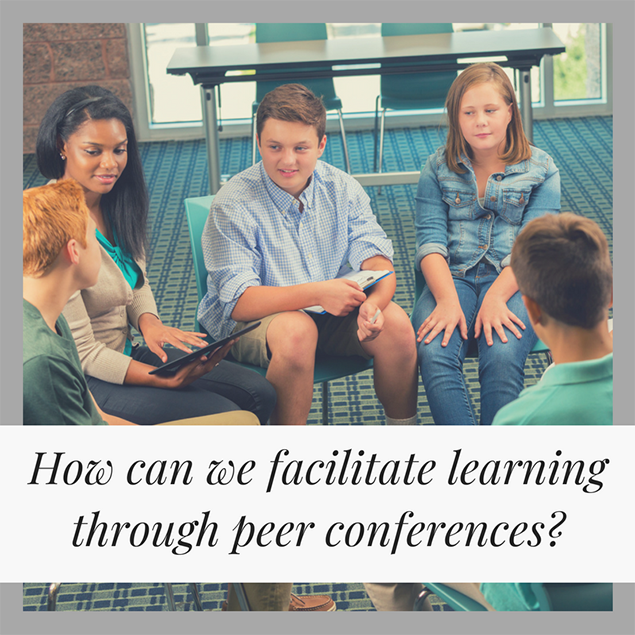Encouraging Learning Through Peer Conferences
Posted by Network Support · Leave a Comment
Encouraging Learning Through Peer Conferences
Peer conferences, or peer reviews, are student-centric learning strategies in which students share and review each other’s work. Primarily used as a writing strategy, peer conferences facilitate learning by providing students with the opportunity to:
- Brainstorm and generate ideas for writing.
- Select topics.
- Prepare drafts for writing.
- Review and revise partners’ work.
- Critique and provide feedback to others.
Preparing for Peer Conferences
Getting started? Here are few points that teachers need to prepare for:
Purpose: Teachers must clearly decide on the purpose of conferences – whether they are to help students generate ideas, share information, or to review written work. Subsequent planning of conferences depends on this purpose.
Structure of conferences: Teachers must make decisions regarding:
- Groups: Small groups are best for brainstorming and sharing information. On the other hand, student pairs work well for reviewing and critiquing peer assignments. Group work is also more effective when students can learn from each other.
- Feedback delivery: Will students be sharing feedback orally or in writing?
- Duration: Teachers can conduct small, short conferences of 2-3 minutes, or longer conferences of 5-10 minutes depending on the purpose for which it is conducted.
- Evaluation: Teachers and students can both evaluate participation and performance of students based on specific rubrics.
Training students: The success of peer conferences relies on students and their understanding and ability to effectively correct and give feedback. For this, teachers must train and prepare students in:
- Using rubrics: Prepare rubrics for assessing specific tasks and actions. For instance, when evaluating a written assignment, students must understand what to look out for. This can be taught by modeling the use of a rubric by reading a sample material aloud and highlighting incorrect grammar, sentence structure, spelling. Another method is to help students identify the elements that are essential to good writing and evaluate using the rubric. A rubric sheet can be prepared and students can initially evaluate their peers using this rubric form.
- Giving Feedback: Feedback given in peer conferences must be more than just marking “good or bad” on the scorecards. Instead students must have a clear understanding of what is acceptable work, and also give reasons for assigning a particular score to their peers. Teachers can provide students with activities in which they give their peers feedback initially on collaboration, followed by giving positive feedback, and finally, critiquing. It is important to constantly remind students that the goal is to improve learning, and therefore constructive criticisms must be given. A simple way to do so is to ask students to find one point which they liked about their partner’s work and two points which they felt needed to be corrected.
Model each step carefully and provide students with ample opportunities to practice using the rubric and giving feedback under supervision. Once students are familiar with the strategy, teachers can reduce their assistance and supervision and encourage students to learn by challenging themselves and each other, strengthening their skills in reflection and analysis.
Like this article for teachers?
Browse the Professional Learning Board COURSE CATALOG to find related online courses for teachers in your state. Professional Learning Board is a leading provider of online professional development classes that teachers use to renew a teaching license or renew a teaching certificate.





